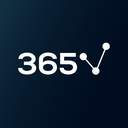
Hey, my name is Elitsa - a Computational Biologist turned data science professional and a course creator at 365 Data Science.
And I’m happy to announce the brand-new addition to our Program: The Data Visualization Course with Python, R, Tableau, and Excel!
In this post, I’ll take you through all the features of the course, its structure, and the in-demand skills it will help you develop. Finally, I’ll tell you a bit more about myself and the projects I’ve worked on.
The 365 Data Science Data Visualization Course
In my career, I’ve worked with multiple datasets on various problems. But what they all had in common was the need to visualize the data to gain some insight, or to present what I’ve discovered in front of an audience.
That is why I decided to create Data Visualization with Python, R, Tableau, and Excel - to help people who work with data to visualize and interpret their findings accurately. This high-powered, practical course will teach you how to create a rich variety of graphs and charts and develop superior data interpretation skills to secure a career in data science or business intelligence. And I hope that once you complete it, creating and understanding data visualizations will come as intuitively to you as it does for me.
Who is this course for?
This course is a perfect match for beginners. But it is also highly beneficial for anyone who wants to advance their career by adding value to their workplace with data visualization proficiency.
What is the structure of the course?
The Data Visualization course is based in 4 different technologies: Excel, Tableau, Python, and R.
And in each section, we’ll explore a specific chart and learn how to create it in all these environments.
It doesn't matter what your preferred software is. You will be able to master the art of beautiful data visualizations in no time! In addition, you have immediate access to ready-to-use templates for all charts studied in the course. All you have to do is download the course files, replace the dataset, and start creating!
Now, the course follows a simple structure that is suitable for everyone’s data visualization journey, even if you are just getting started.
In the first section, you’ll get familiar with the highest level in data visualization theory – how to select the most appropriate chart, chart color, and so on.
In the second section, you’ll explore in detail how to install the different software to make sure you are all set to learn.
The subsequent sections are organized in a very consistent way.
- Each section revolves around a given chart type;
- The first lecture of each section introduces the type of visualization and the dataset we’ll be working with;
- The following 4 lectures show the practical implementation in Excel, Tableau, Python, and R. You are free to learn all 4 software, or simply stick to your preferred one;
- Finally, we conclude with 1 or more lectures on chart usage and interpretation.
What will you learn?
You’ll learn how to create stunning visualizations with:
- Bar charts
- Pie charts
- Stacked area charts
- Line charts
- Histograms
- Scatter plot and a Scatter plot with a trendline (regression plot)
- Combo charts, race bar charts, and correlograms
Not only that – you will grasp how to label and style data visualizations to achieve a ready-for-presentation graph; interpret different types of charts; and choose the right chart to provide the most meaningful visualization of the data you are working with.
About the author
As I mentioned earlier, I am a Computational Biologist. I have deep expertise in the fields of algorithms and data structures, phylogenetics, as well as population genetics. My academic background is in Bioinformatics with publications on constructing Phylogenetic Networks and Trees. I am also one of the authors of the course Customer Analytics in Python in the 365 Data Science Program. If you're curious to learn about my experience and projects, you can find more details in this interview.
The Data Visualization course is part of the 365 Data Science Program, so current subscribers can access the courses at no extra cost.
To learn more about the 365 Data Science Program curriculum or enroll in the 365 Data Science Program, please visit our Courses page.
Want to explore the curriculum or sign up 15 hours of beginner to advanced video content for free? Click on the button below.






